Chicken Pasanda is a mild curry with air-fried boneless chicken pieces cooked in a luscious almond-rich gravy. This dish is scented with kewra water and laced with saffron and garnished with toasted almond slivers. Serve this dish on a bed of steamed rice, with paratha or naan!
Origin:
Like most legendary dishes, the origin of the ‘pasanda’ recipe is a star, covered by controversy in Indian gastronomic circles. One version has it as the creation of the Mogul Nawabs, yet another places its origin within the Awadhi Kayasths, and both of them were in the 16th century. Yet, another text, the Manasollasa has a very similar dish being created in the 12th century by the chefs of King Somesvara III of the Western Chalukya dynasty.
Notwithstanding all this historical polemic, the phrase ‘pasanda’ itself comes from the Hindustani or Urdu phrase ‘pasandida’ which roughly translates to ‘highly favored or favorite’. This is attributed to the fact that the original ‘pasanda’ used favored thigh cuts of goat or lamb. These pieces were tenderized using a mallet before being marinated and cooked in yogurt or coconut cream before being garnished with almonds.
In fact, the original name for the pasanda is ‘Badaam Pasanda’. ‘Badaam’ in many Indian languages refers to almonds and the dish reflects its namesake. The strictly traditional, (one might argue) authentic method of cooking Badaam Pasanda was to marinate the meat strips with yogurt and various spices; stuff and roll the strips with blanched almonds and pistachios; secure the rolled meat with coconut coir or string; lower the parcel into a boiling sauce of seasoned yoghurt and spices; and cook for about 30 minutes to an hour at low flame.
When you consider this method, it makes perfect sense to why the goat or lamb thighs were flattened. When one tenderizes these cuts, holes are punctured into the flesh and connectivity tissue, enabling the meat to absorb spices and flavors before being slow-cooked. That said, what I am going to share with you is a family recipe for the Chicken Pasanda.
Health benefits of nuts in Chicken Pasanda:
I’ve made no secret of the fact that I love nuts. Nuts were once considered high-fat anathemas. New research has shown that nuts deliver higher fiber content and also have healthy monosaturated and polyunsaturated fats. The fat content in nuts helps foods retain moisture while fiber helps maximize satiety, so that one gets that ‘full’ feeling while exercising portion control. Nuts have been a traditional addition to Indian cuisine, used both as a flavor-enhancing thickener in sauce-making and as an added garnish. While my Chicken Pasanda recipe does not use mallets and stuffing, it does highlight the use of nuts as a flavor enhancer.
- Almonds: Almonds possess a subtle nutty taste which helps enrich the flavor of most proteins, especially meats, seafood, and tofu. The subtlety of this nut belies its status as a rich source of vitamin E that acts as an antioxidant to protect your cells against oxidative damage. Their vitamins and mineral composition help reduce heart disease risk factors like LDL (bad) cholesterol and excess belly fat.
- Cashews: One of my all-time favorite nuts is the cashew nut. I use them extensively in making sauces and as a healthy alternative to dishes that call for cream. One of my pet peeves with restaurant food is their extensive use of heavy cream as a base to many of the thick curries and kormas. Instead, I prefer to use cashews. Research has shown that cashews are great for bone health because they contain, vitamin K, magnesium, and manganese. Cashews also improve blood pressure, blood fat, and blood sugar levels, while also helping to reduce belly fat.
As I’ve said, I am not a fan of heavy cream, and I eschew its use in my dishes as a thickener or filler. I believe that the dish needs to speak for itself. I, therefore, prefer to use nuts and yogurt to give my dishes a natural thickness. From my pen to your table, Bon Appetit!
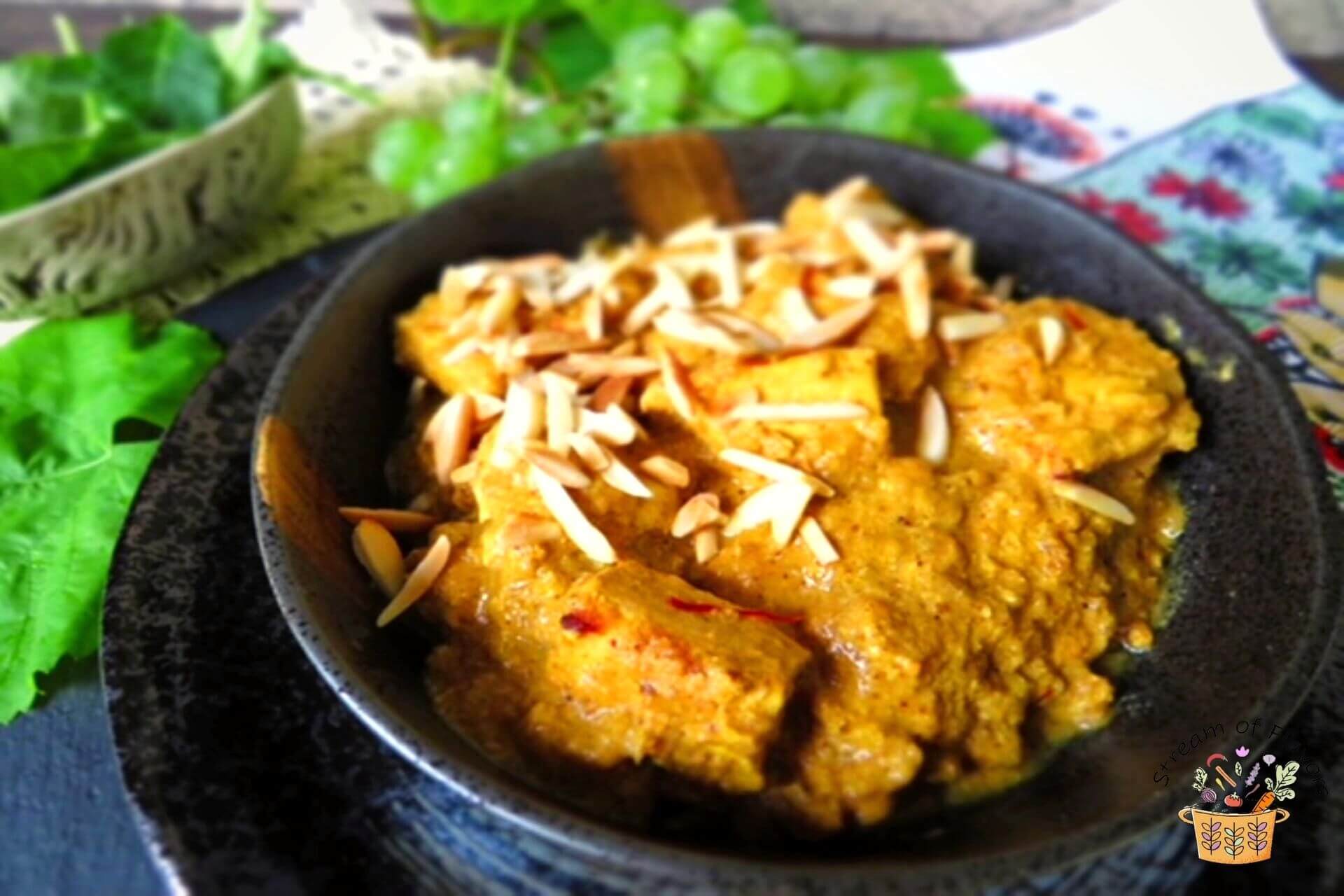
Frequently Asked Questions:
1. Do I need to marinate and tenderize the chicken pieces?
Yes, marinating the chicken prior to cooking or air frying them helps infuse the flavors into the meat. While the original meats in the traditional dish were goat or lamb, which required some tenderizing and flattening, this technique can be used with almost any protein, whether it is chicken, prawns, or even paneer. You should obviously avoid using a mallet to tenderize these proteins, but you can instead, butterfly them.
In most cooking, preparation is key, more so when preparing meats. The Chicken Pasanda technique is no different. The family recipe below enabled me to prepare the chicken version using the pasanda technique without resorting to flattening the meat. Instead, I used thin-cut breast pieces. Chicken being more tender than goat or lamb allowed me to forgo the additional step of tying the meat into parcels with the nut stuffing inside it.
2. Can heavy cream be added instead of nuts?
Restaurants add cream to the gravy to thicken it and bulk it. If you have nut allergies, I suggest adding quinoa flour to thicken your gravy, which is a healthier alternative to heavy cream.
3. What is the difference between a korma (or ‘kurma’) and a pasanda?
Pasanda is a milder gravy with the addition of ground almonds, although cream is optional. Korma has ground coconut or coconut milk added to the gravy. It depends on which version you make. If you use the traditional method I’ve described above, it’s completely different because the meat is seasoned and marinated with nuts before it is slow-cooked. In most Indian households, meats are seasoned with salt, turmeric, ginger, and garlic before cooking, especially if the meat is ‘gamey’. Once that is done, the meat is usually sautéed before the sauce is added.
Traditional korma is made of yogurt, ground almonds or cashew nuts and/or coconut milk to give the dish a smooth, creamy texture. Modern restaurants distinguish korma and pasanda based on color. Korma tends to be green or yellow depending on the spices used, while pasanda is more a yellow-cream, mild sauce composed of yogurt and cashews or almonds. Sometimes, saffron or rose petals are added for color, flavor, and texture.
4. Can I make the Chicken Pasanda with another type of protein?
Of course, it is important to remember that pasanda in its modern form is a technique. The key is to marinate the protein with the nuts and/or yogurt. You can also grind the nuts and use it as a coat. It is important to remember that blanching a nut gives it a milder flavor while roasting it does the opposite because it metabolizes the fats inside. I did not blanch the almonds in this recipe but I used whole ground almonds.
Ingredients:
- Chicken breasts: Boneless pieces of chicken breasts or you could substitute with lamb, goat or even paneer.
- Ginger and garlic paste: Grind the peeled and chopped ginger and garlic and grind them with a tablespoon of water to make a paste.
- Yogurt : I have used whole yogurt. Hung yogurt (plain yogurt without the whey) or Greek yogurt may also be used.
- Cumin, coriander and sesame seeds: Whole seeds and white or brown hulled sesame seeds
- Tomatoes: Blanched and puréed
- Green chili: Bird’s eye chili or Thai chili
- Other whole spices: Star anise and green or black cardamom
- Saffron : Strands crushed with palms and soaked in warm milk
- Almond – Slivers or slices and ground whole almonds; cashews are a good substitute
- Garam masala : Ground or powdered
- Kewra water: Optional
How to make the Chicken Pasanda:
- How to make the marinade?
- How to make the spice mixture?
- How to make the gravy?
- How to make the marinade:
- Mix the ingredients and marinate the chicken breasts for ½ an hour.
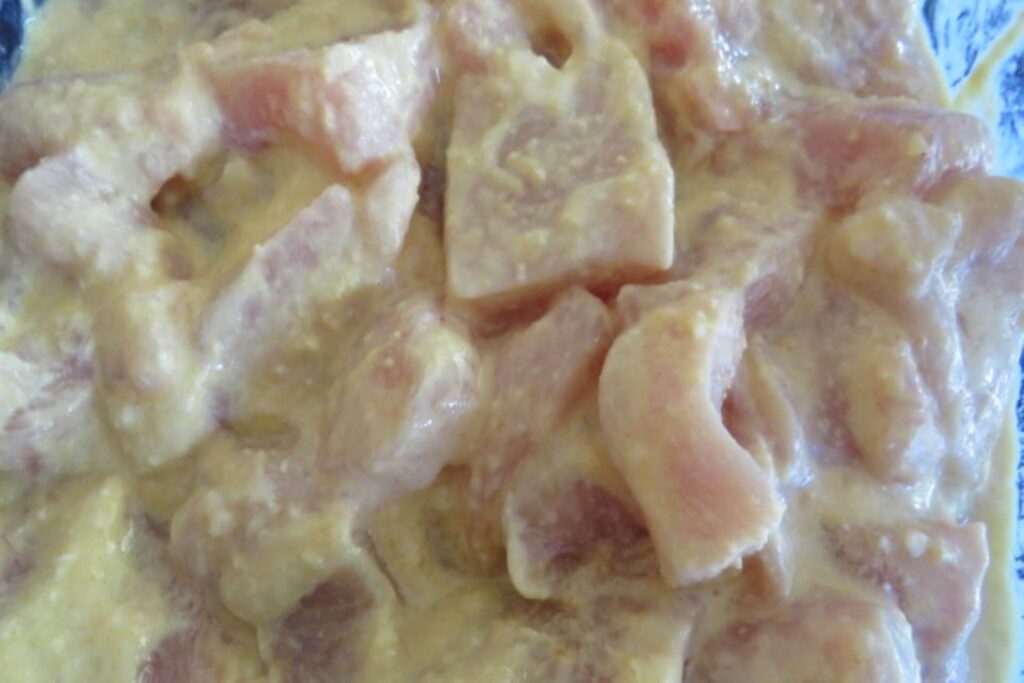
- Air fry the chicken after drizzling one tablespoon of ghee on top of the breasts at 400 degrees F for 15 minutes. I have used the air frying basket with a foil-lined tray below to collect any juices from the chicken.
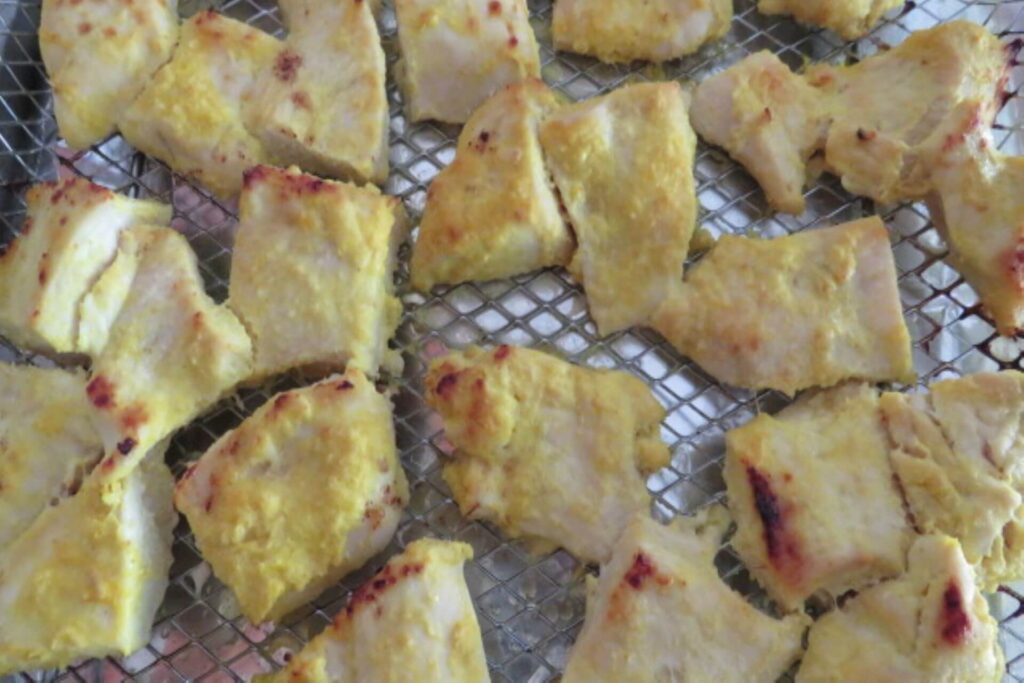
2. How to make the spice mixture:
- Roast and powder the ingredients for the spice mixture and mix with the almond meal or ground whole almonds. Roast the spices on low heat until they are fragrant or turn brown.
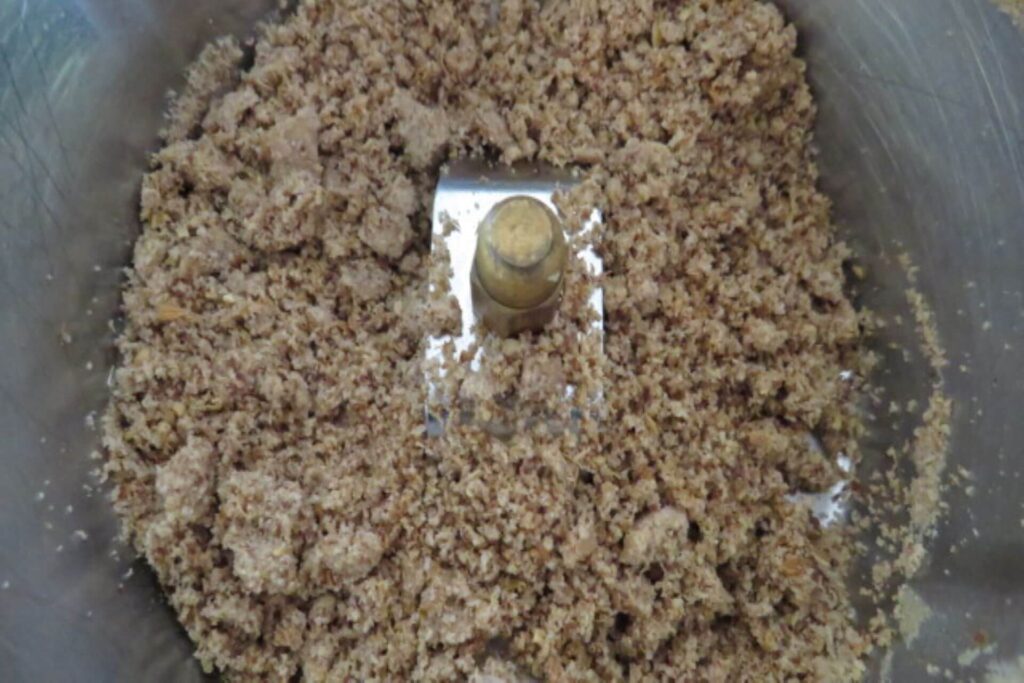
3. How to make the gravy for the Chicken Pasanda:
- In a medium wok, heat the ghee with the star anise and cardamom. Add the finely chopped onions and sauté for 3-5 minutes or until browned. Cool and grind the onion in the spice grinder to a coarse paste.
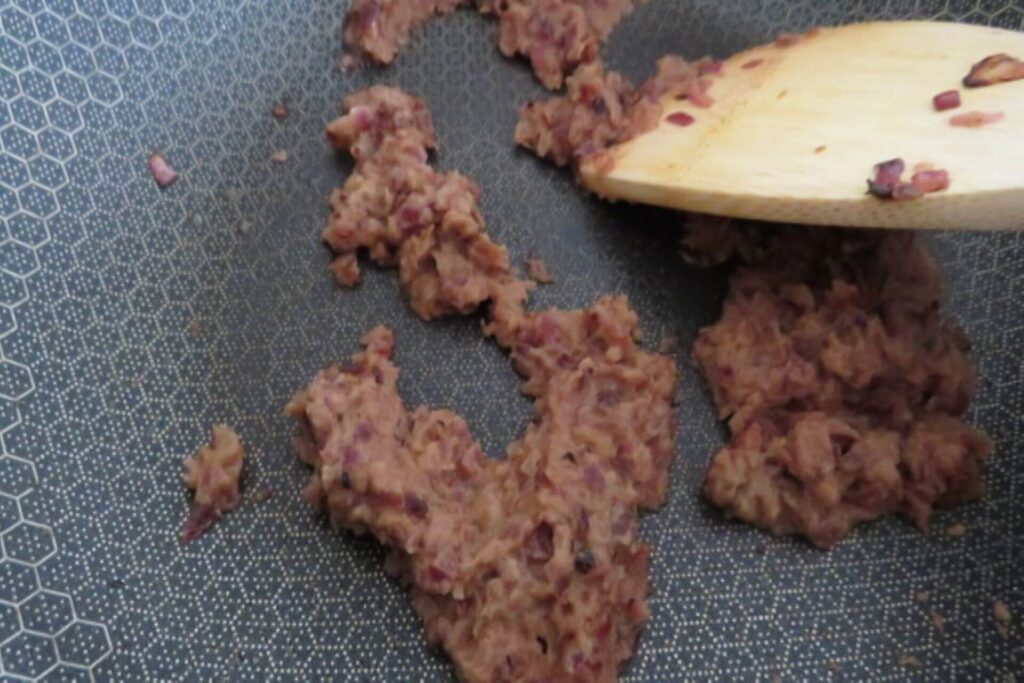
- Add the tomato purée and cook for 2 minutes.
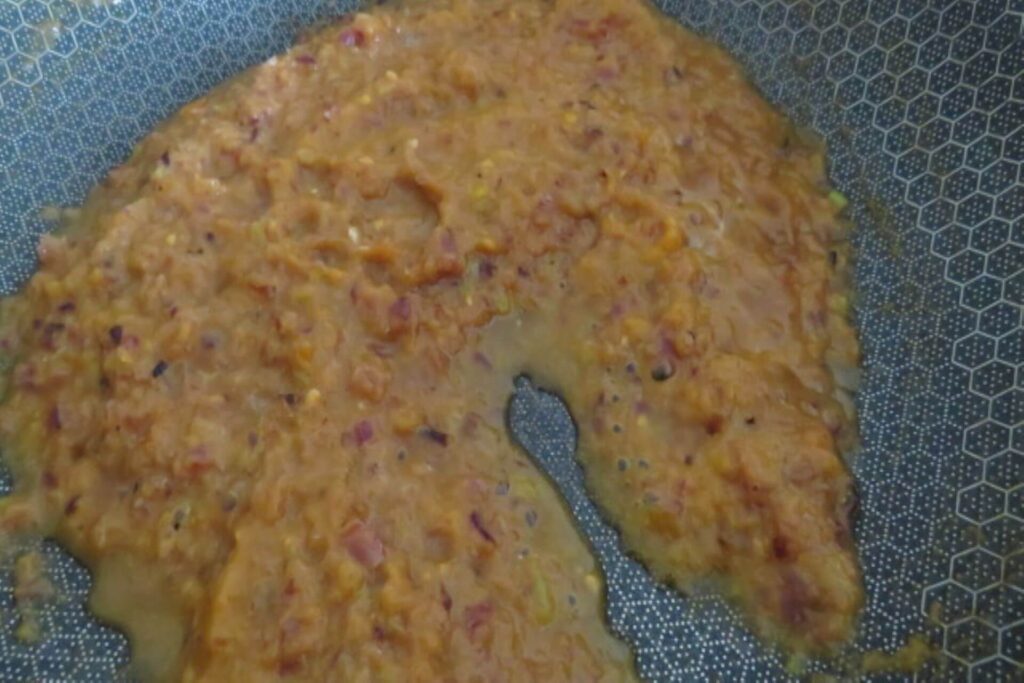
- Add the spice mixture and 1 1/2cups of water or leftover juices from air frying the chicken or leftover water from washing the spice grinder. Add salt. Add the chicken pieces and cover and cook on medium heat for 10 minutes.
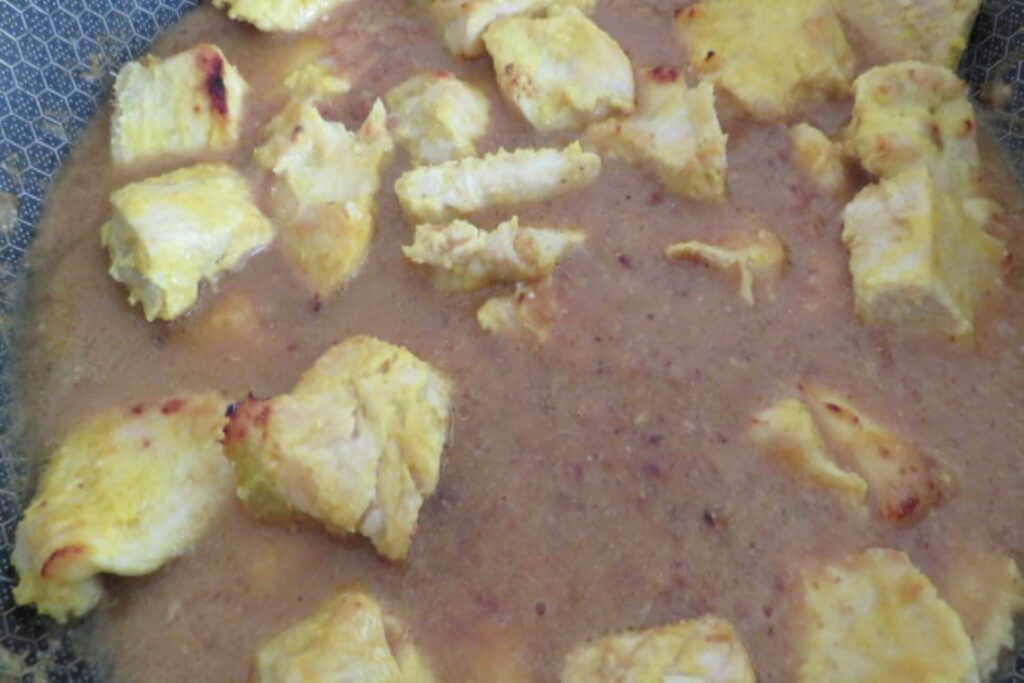
- Add the garam masala pd and saffron milk. Cook for a minute and turn off the heat. Add a few drops of kewra water and garnish with the toasted almond slivers.
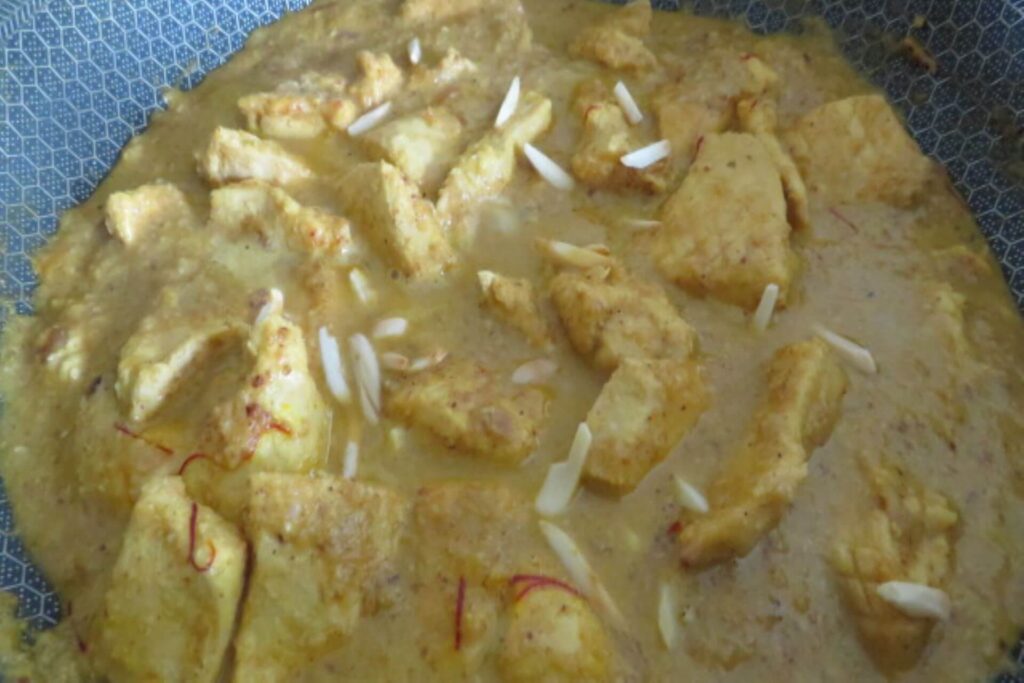
- Serve the Chicken Pasanda with rice or naan.
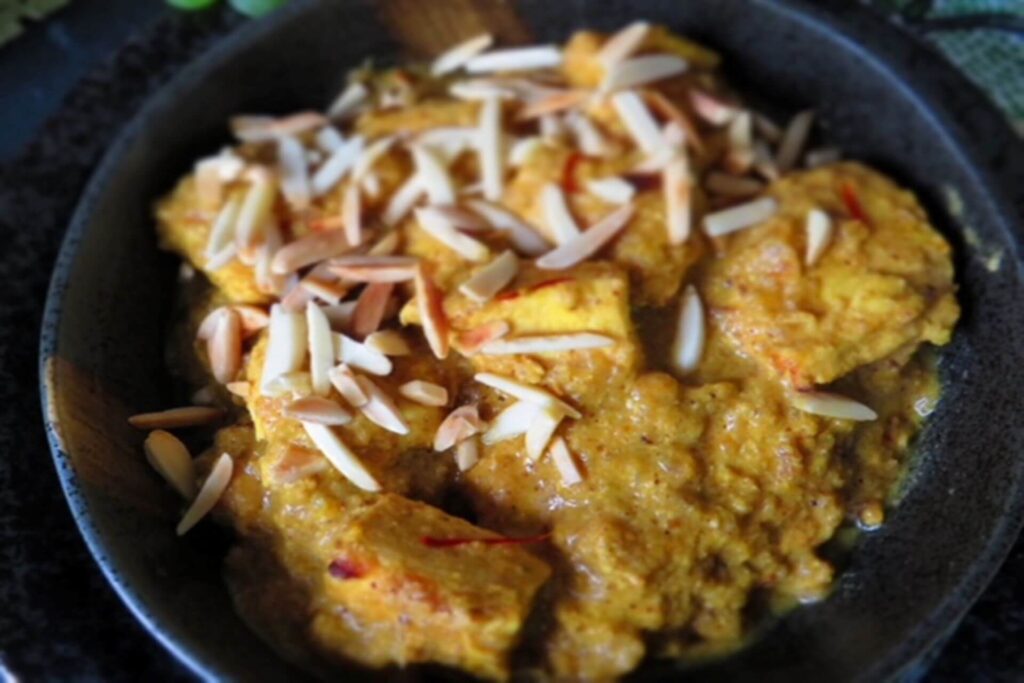
1. Pour boiling water on the tomatoes and allow 5 minutes before removing the skin or blanching them.
2. Soak the saffron strands in warm milk for at least 5 minutes after rubbing them with your palms to infuse the flavor.
3. Grinding the onions to a coarse paste will result in a thick and luscious gravy at the end.
4. Roasting the grinding the spices enhances the flavor of the dish. Do not over-roast the spices or they will make the dish slightly bitter. Feel free to skip this step and add ground or powdered spices.
Serving suggestions:
Serve the Chicken Pasanda with naan, any Indian bread or on a bed of steamed rice. In my household, I have served with cooked quinoa, freekeh and even Indian dishes made with semolina.
Storage:
Cooked Chicken Pasanda can be refrigerated for two days or frozen for three months in an airtight box.
Other chicken (gravy) recipes that you might love to try:
Chicken Pasanda
Equipment
- wok or saucepan
Ingredients
For the marinade:
- 1½ lb chicken breasts boneless
- 1 tbsp garlic minced
- 1 tbsp ginger paste
- 1½ tbsp whole yogurt
- ½ tsp turmeric powder
- ½ tsp salt
For the spice mixture:
- 1 tsp cumin seeds
- 2 tsp coriander seeds
- 1 tsp sesame seeds
- 2 tbsp ground almonds
For the gravy:
- 3 tbsp clarified butter (ghee)
- 2 star anise
- 3 green cardamom
- 2 onion chopped fine
- 4 tomato blanched and puréed
- 4 birds eye chili chopped
- ¼ tsp saffron soaked in milk
- 3 tbsp whole milk
- ¾ tsp salt
- ½ tsp garam masala powder
- 2 tbsp almond slivers toasted
- 1 tsp kewra water optional
Instructions
How to make the marinade:
- Mix the ingredients and marinate the chicken breasts for ½ an hour.
- Air fry the chicken after drizzling one tablespoon of ghee on top of the breasts at 400 degrees F for 15 minutes. I have used the air frying basket with a foil-lined tray below to collect any juices from the chicken.
How to make the spice mixture:
- Roast and powder the ingredients for the spice mixture and mix with the almond meal. Roast the spices on low heat until they are fragrant or turn brown.
How to make the gravy:
- In a medium wok, heat the ghee with the star anise and cardamom. Add the finely chopped onions and sauté for 3-5 minutes or until browned. Cool and grind the onion in the spice grinder to a paste.
- Add the tomato purée and cook for 2 minutes.
- Add the spice mixture and 1 1/2cups of water or leftover juices from air frying the chicken or leftover water from washing the spice grinder. Add 1 tsp salt. Add the chicken pieces and cover and cook on medium heat for 10 minutes.
- Add the garam masala pd and saffron milk. Cook for a minute and turn off the heat. Add a few drops of kewra water and garnish with the toasted almond slivers.
- Serve the Chicken Pasanda with rice or naan.
Notes
- Ginger or garlic pastes are available at Asian grocery stores.
- I air fried the chicken breasts. You could choose to grill, bake or even simply pan fry the breast cubes.
- Partial cooking is essential as the chicken will then be cooked again in the gravy. What you really don't want is to overcook the chicken.
Nutrition


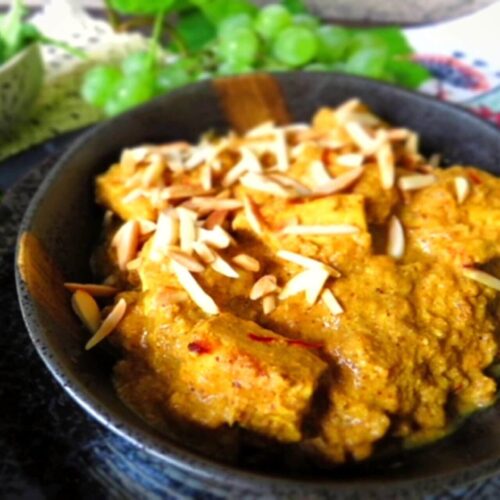
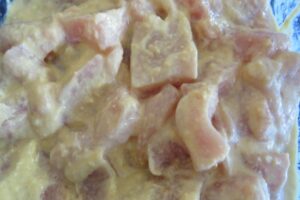
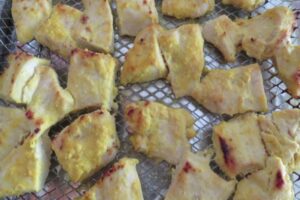
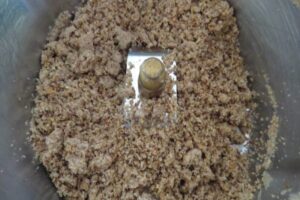
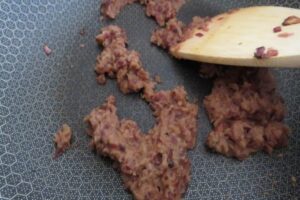
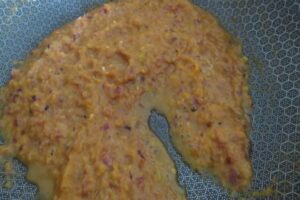
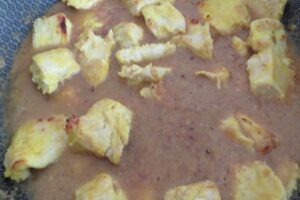
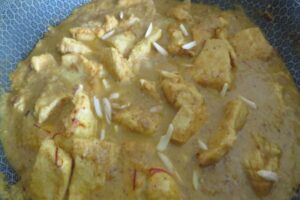
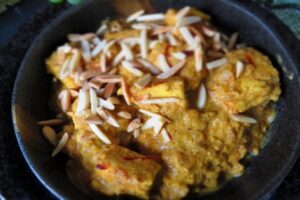





















So I had a wonderful time making this for our Christmas dinner. Not only was this so easy to make, I love the creamy flavor of this pasanda. Loved it!!
Thanks for the positive comment!